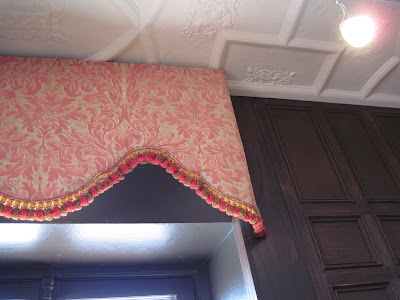After entering the building there are many other unusual elements to look at. As a maker, I am drawn to the hand made elements of the building. I think that these are the elements that attention should be drawn to because modern architects no longer request or incorporate hand made elements into domestic spaces. If adornment is about revealing and at the same time confirming the identity, personality, and status of a person, how can supplements we add to the Villa Terrace do the same thing?
There are several objects already presented as artwork in the Terrace, Cyril Colnik's masterpiece, or the piece ha had to make in order to be considered a master, statues in the front garden, display cases with superb ivory objects. Although these are all beautiful objects, I believe we as makers can reveal something else, something specific about the elements that make this building unique, elements that deserve to be looked at again, in more depth. Martha talked a lot about how when Cyril was making ironwork for the building, he would have never thought of it as artwork, only functional. Can we bring that attention to it now?
I would like to propose this idea of reflection or echoing, of what is already in the building, through reflective surfaces. The surfaces we install (could perhaps include others in this too if anyone wants to jump in!) could be free standing mirrors, facing what we choose to reflect or perhaps reflective vinyl objects installed throughout the house (could be sheets of vinyl that stick to any shape or anything shiny enough to mirror)
Here are some examples of artists that use reflection in their work:


What if a mirror reflected that ceiling? To draw more attention to the detail in the pattern, make us wonder who made it? Why has attention been brought to it? Is there a reference to anything in the pattern? Where was it made? Was it ordered special? From where? These are things I want to know, how can I find more about these specific details?
There were also a variety of wall sconces holding candles and functional ironwork throughout the house. I could see mirrors throughout the house, but in unusual places, you would really have to look for them, like an Easter Egg Hunt. Perhaps just placed on the ground, perhaps very small resting on a shelf, perhaps in front of another mirror, creating an infinite space for us to enter and contemplate.
These pieces would echo these elements, drawing attention to the fact that this doesn't happen anymore, making us appreciate what is already there.
I am still very interested in my first proposal as well, responding to the three material elements of my favorite room which appears above. But how could jewelry pieces be displayed? Andrea Miller suggested a one night only fashion show. I think this could really work. What does everyone else think?
This also makes me think of Stephanie Liner's work













